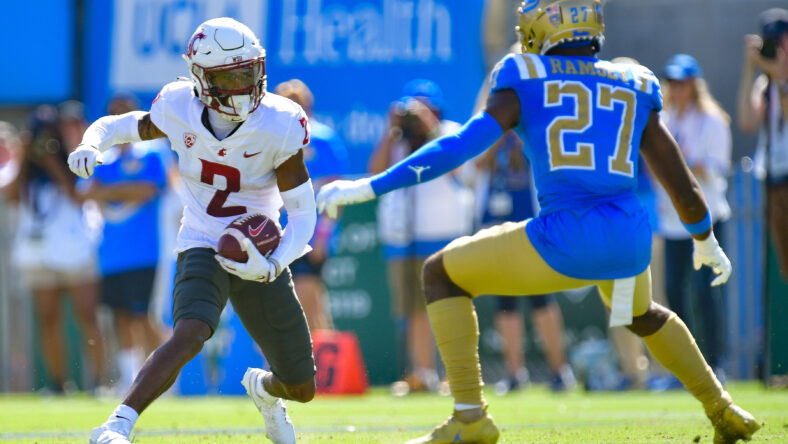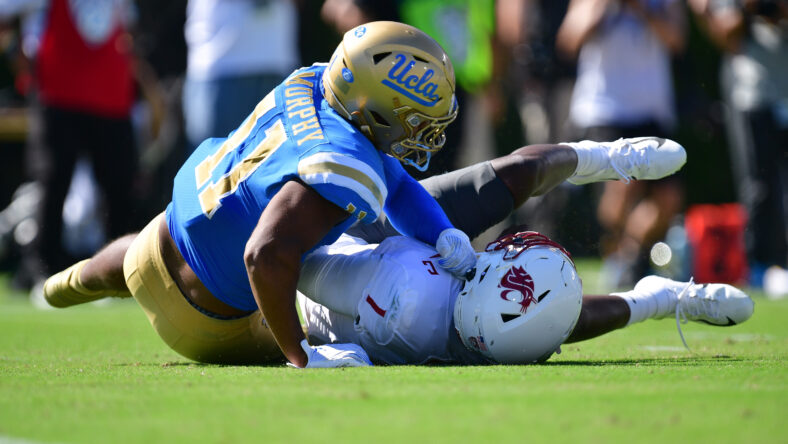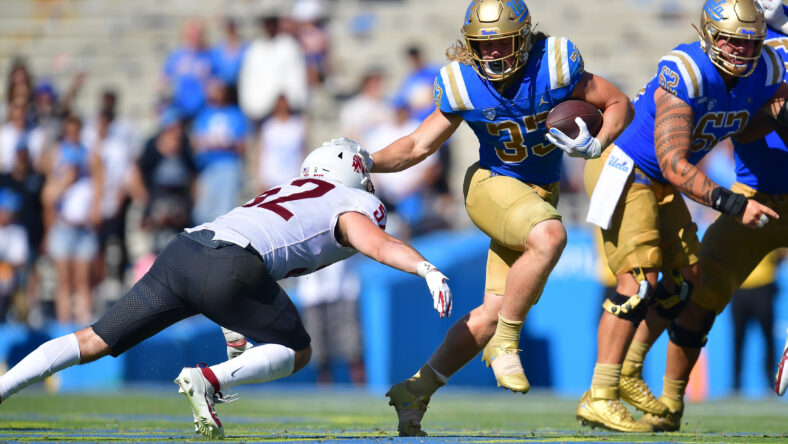Bruins Triumph Over Cougars: A Schematic Analysis of UCLA vs. Washington State
Check how LAFB’s Experts Picked The UCLA vs. Washington State Game
On a sweltering Pasadena day at 94 degrees, the Rose Bowl was abuzz with excitement. Not only were the students finally witnessing their team in action for the first home game of the school year, but there was also a touch of the NFL in the air. Kai Forbath, former NFL kicker and UCLA star served as the honorary captain, and NFL players Dorian Thompson-Robinson and Zach Charbonnet, enjoying a bye week, were in attendance. The atmosphere was electric, and the game did not disappoint.
Cougar’s Air Attack: A Mixture of Ambition and Precision
The offensive strategy of Washington State was crystal clear from the outset. Under the leadership of QB Cam Ward, the Cougars employed a variety of high-low concepts aiming to exploit gaps in UCLA’s zone coverage. The offense often motioned the running back out to the flats, seeking to stretch the Bruins laterally. Their ambition was apparent as very vertical play calls dominated the first quarter, but despite their best efforts, the Cougars were limited to only 204 passing yards.
Ward’s fast release, even under pressure, was a standout, complemented by his receivers running a plethora of quick slants. Ward had entered the game without an interception on the year but finished with the Bruins picking him off twice.

Cougars on the Defensive: Aggressive and Opportunistic
The Cougar’s defense showcased a dynamic 4-3 scheme, often moving their safety positions based on situational requirements. Their physical presence was undeniable, evident both at the line of scrimmage and in their tenacious tackling. Dante Moore‘s interception was off a hurried throw, the result of intense pressure, highlighted their approach. Kapena Gushkin’s exemplary read, where he swiftly jumped Moore’s pass after a pass rush, turning it into a pick-six, further underlined their defensive prowess.

The Bruin Wall: Intense Pressure and Opportunism On Defense
UCLA’s defensive game plan was both effective and adaptable. Primarily operating with a single high safety setup with corners providing off-coverage, the Bruins were intent on stifling WSU’s pass attack. Their frontline, especially the edge rushers, consistently rattled Ward.
Their varied approach, from Alex Johnson‘s vertical leap to intercept a well-thrown ball to their remarkable three-man rush led by Gabriel Murphy, signaled their versatility and effectiveness. The defense further capitalized with two fumble recoveries and a total of three interceptions.

Bruins with the Ball: Innovation meets Adaptation
UCLA’s offense showcased a blend of creativity and adaptability. While inside runs struggled against WSU’s stout defensive line, the Bruins found success on the edges with sweeps and stretch runs. The rotation of their primary running backs, Carson Steele and TJ Harden kept the Cougars guessing. Steele’s endurance was notable, especially his daring run straight into the heart of the defense.
Dante Moore, the freshman QB, while showcasing flashes of brilliance, also had moments of inexperience. The Bruins’ adaptability was highlighted by their varied formations, transitioning from tight formations to wide/trips formations, and their effective use of the tight ends, with Moliki Matavao leading in yards.
In conclusion, in a clash of tactical prowess, physicality, and on-field dynamism, the Bruins emerged as the deserved victors. Both teams, showcasing formidable defenses and innovative offenses, gave fans a good game.
